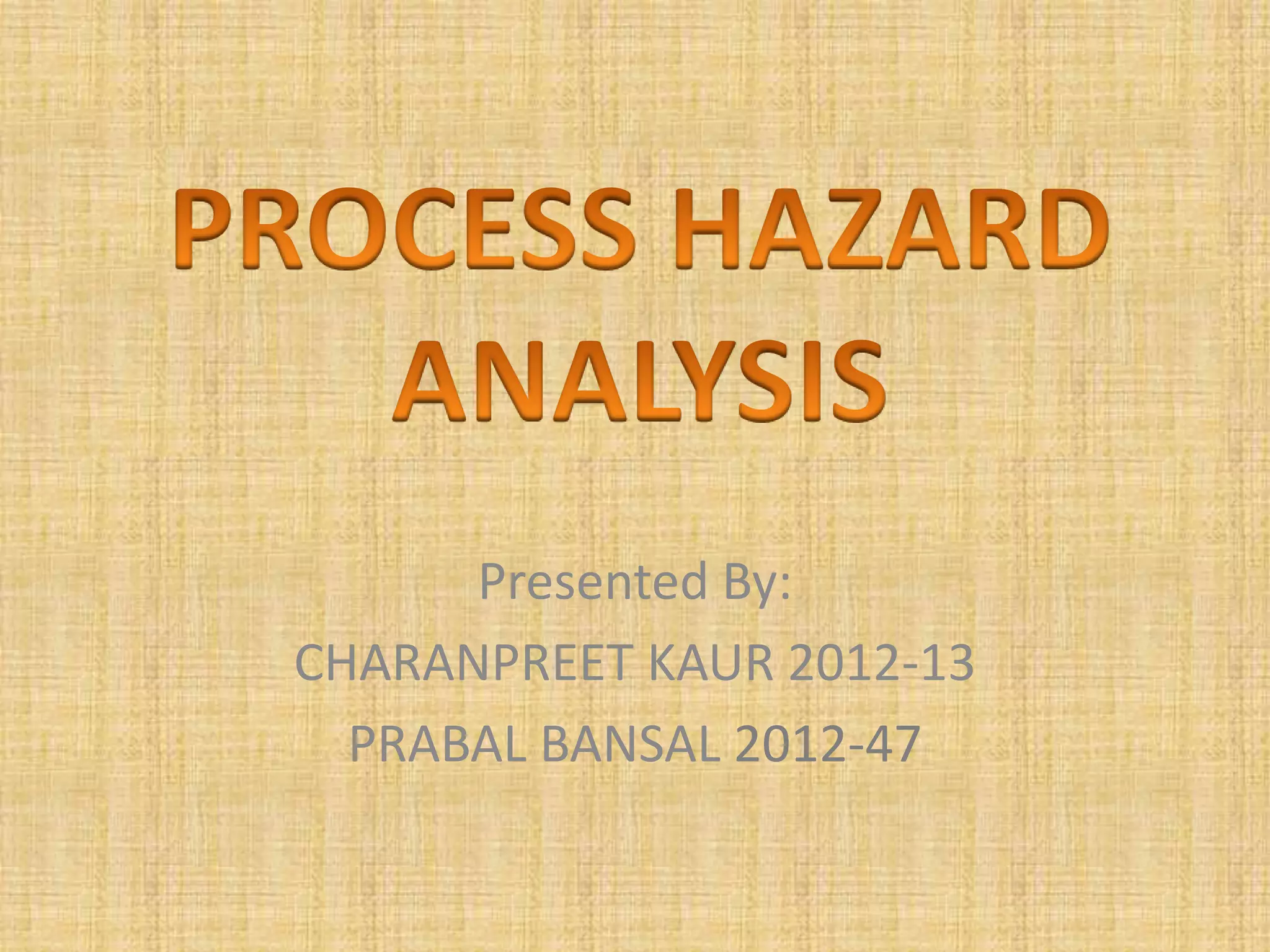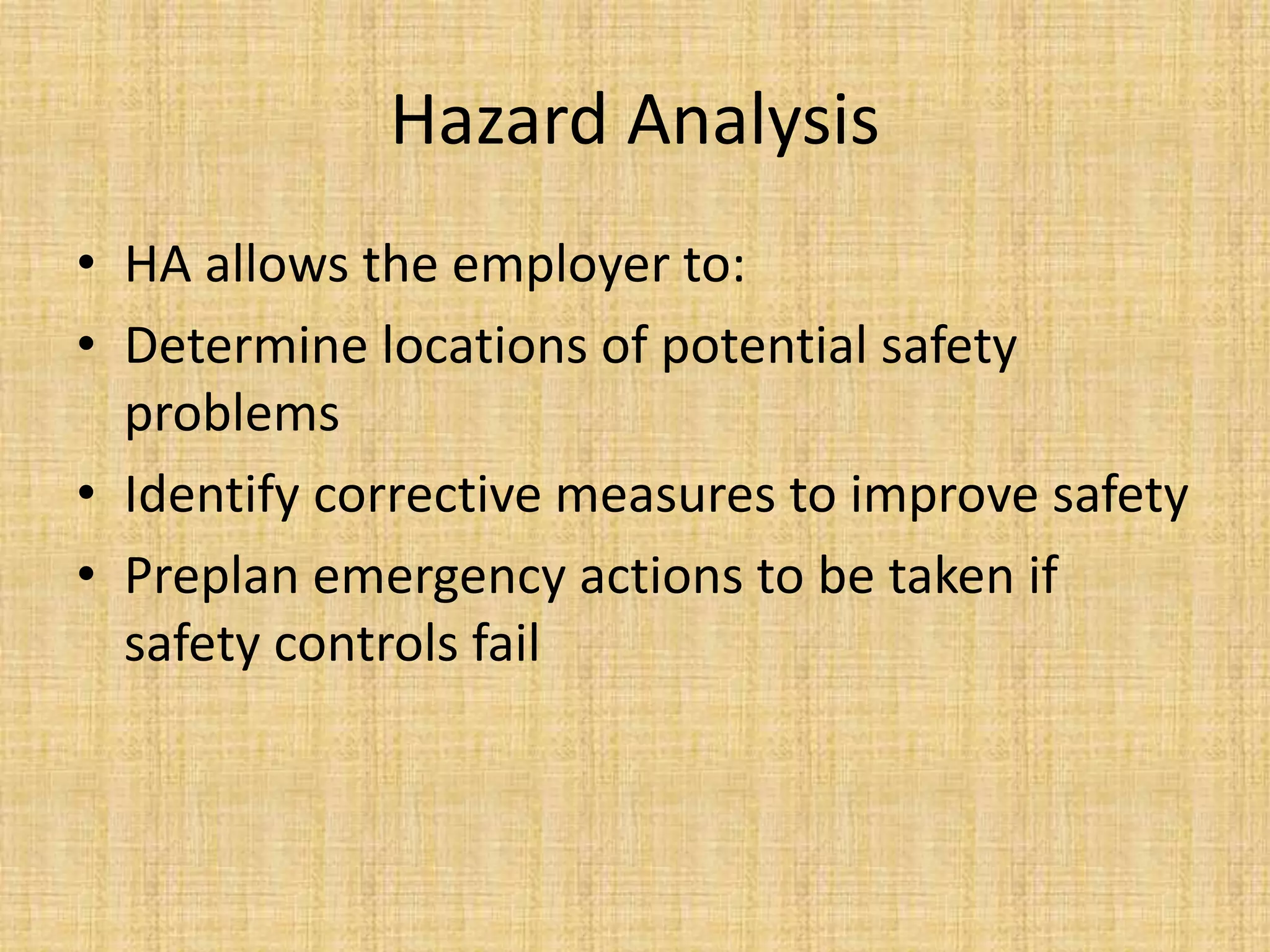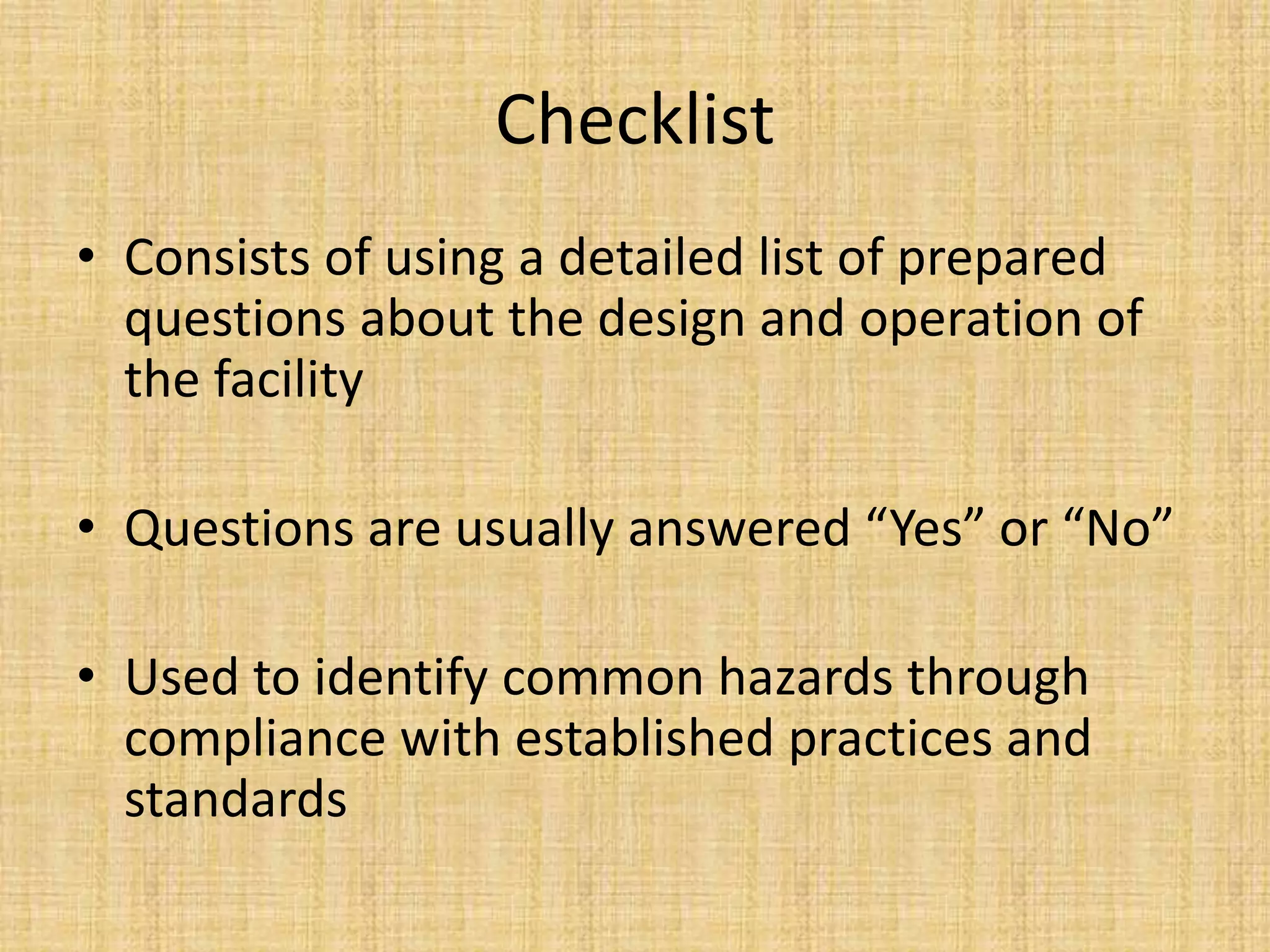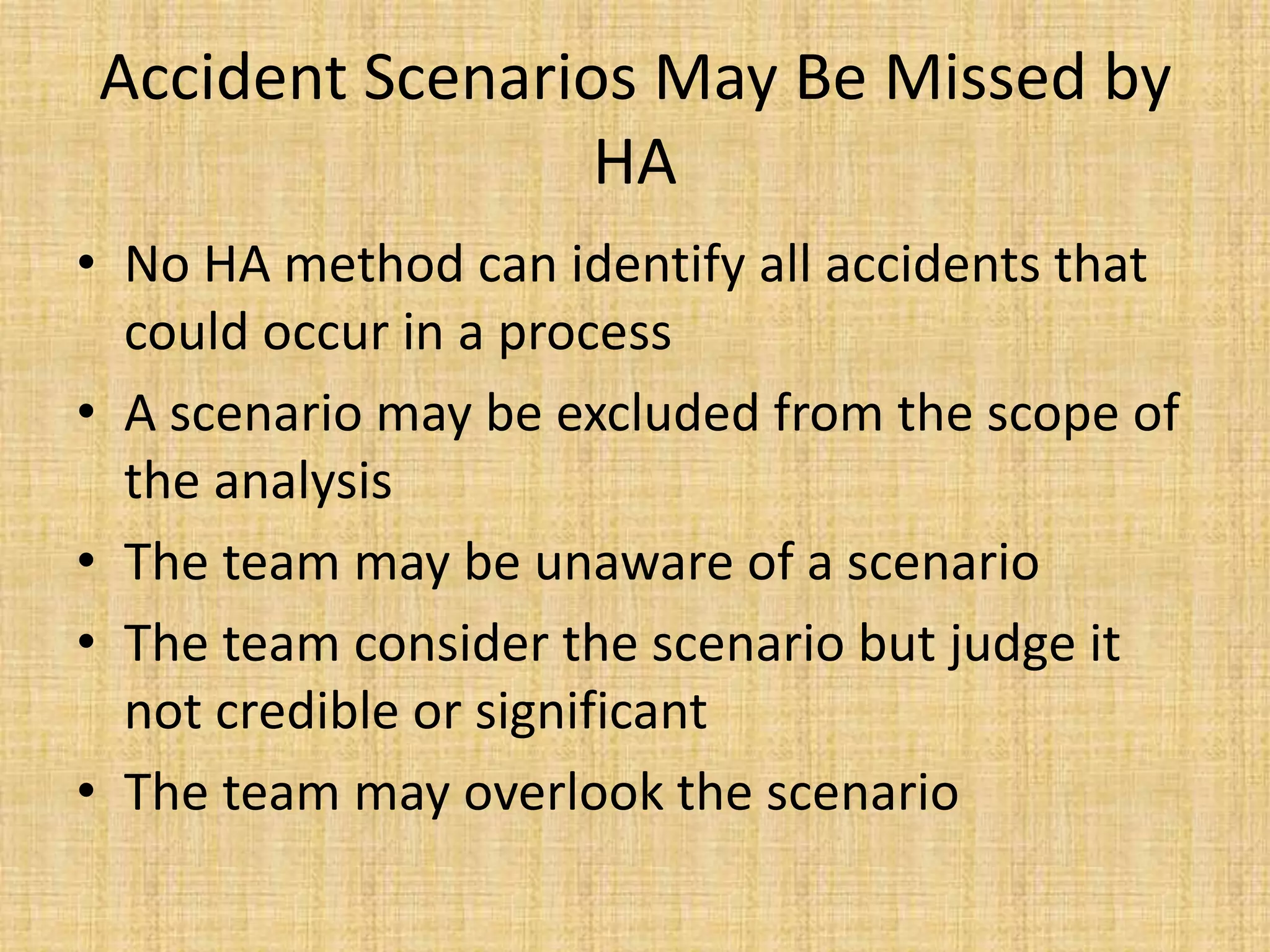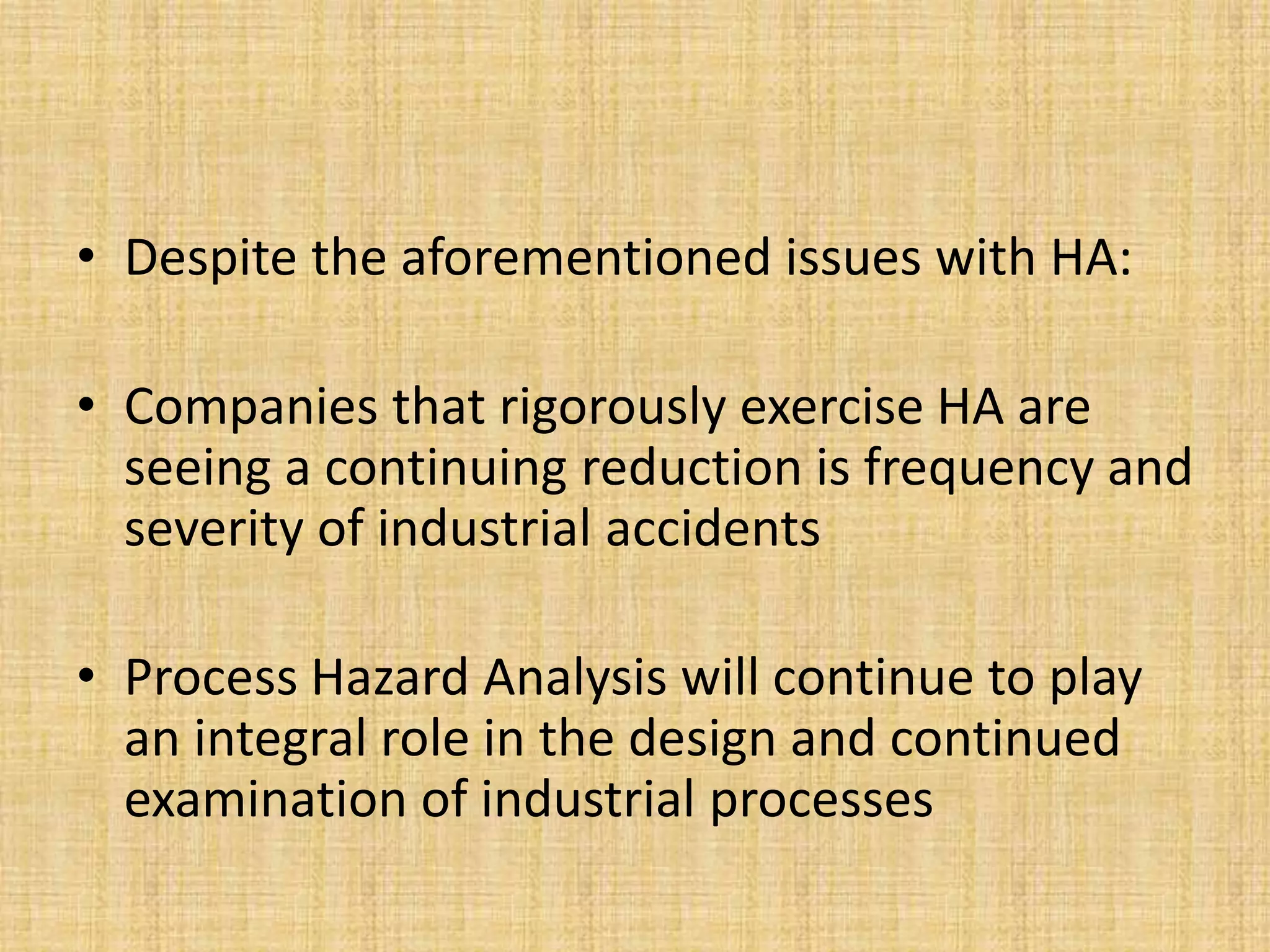This document discusses hazard analysis, which allows employers to identify potential safety problems and corrective measures to improve safety. It describes several hazard analysis techniques including What-If analysis, checklists, Hazard and Operability Studies, and Failure Mode and Effects Analysis. What-If analysis involves experienced personnel brainstorming "What if?" questions to evaluate potential process hazards and failures. Checklists consist of yes/no questions about facility design and operation. Hazard and Operability Studies identify safety hazards and operational problems. While no technique can identify all accident scenarios, hazard analysis plays an important role in reducing industrial accidents when rigorously applied.
